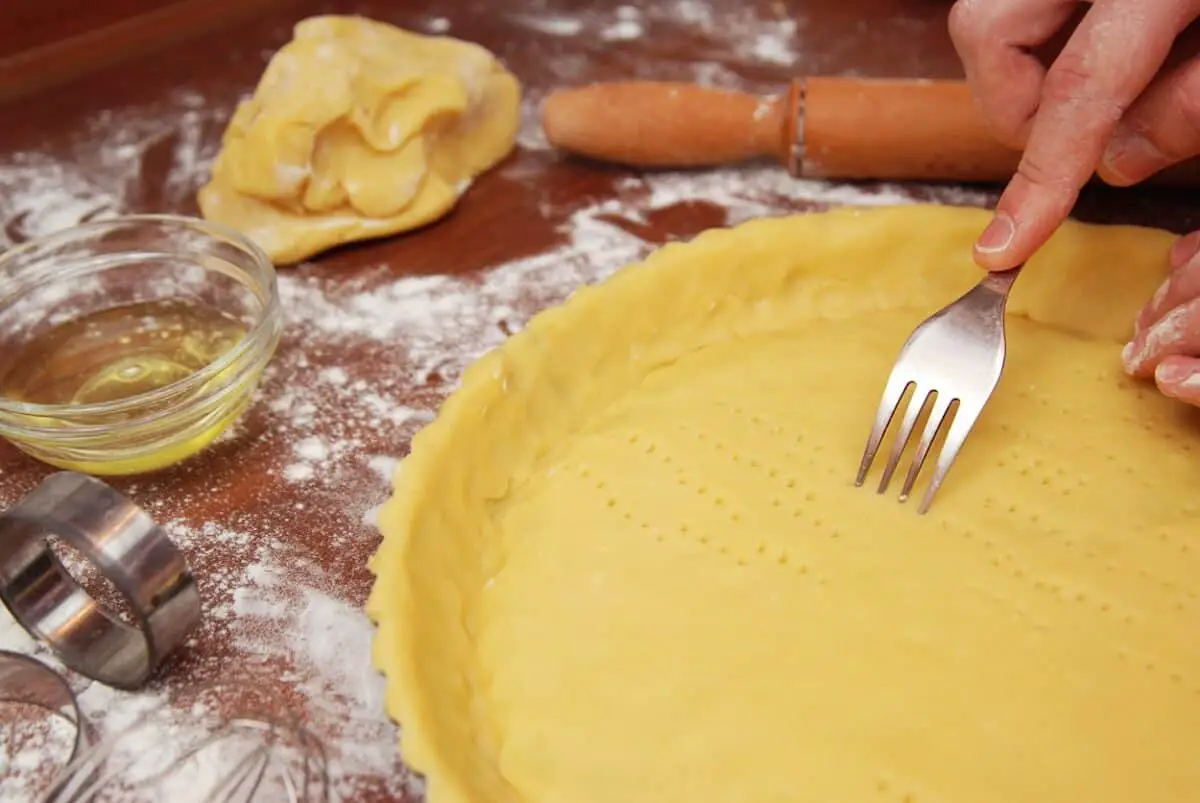Last Updated on 23rd April 2022 by
Pie is my reward food when I am on a diet. I take a little slice at the end of the week if I have done well on eating what I am supposed to and avoiding what I’m not supposed to eat. I would eat more pie if I didn’t know very well what it does to my weight, and I do love a good piece of pie.
What I don’t like is when the crust comes out soggy and damp. It starts to lose its texture and some of the taste too. I know that’s a common problem people have when they make pie, and I wanted to write this little guide on how to keep a pie crust from getting soggy.
Sometimes, the problem is just a humid environment or a bad recipe. I know these issues crop up and it may be difficult to do much about a humid environment. You can always use a different recipe as well, and I suggest using a pie crust recipe that has been proven to work.
What are my tips for how to keep pie crust from getting soggy? I have a bunch for you, and I sure hope some of these work for your particular issue. It’s no fun spending all that time working on a pie for the crust to come out poorly. Hopefully, that won’t happen anymore for you once you follow my guidelines and use these tips in your own pie baking. You can have perfect pie with a perfect crust every time.
Drain Your Fruit
One thing that will make pie crusts soggy is having too much liquid in your filling. The filling should be thick or made up of mostly solids. If you have very runny liquid in the filling, then that can make the pie crust turn soggy.
So, if you are making a pie using fresh fruit, make sure the fruit is not just drained of excess liquid but also dried out. Fruit that is overly damp can cause you issues, so make sure it is dried a such as possible. The fruit will become soft and moist as it bakes, so don’t worry that you are putting it into the pie pan dry.
You may use fruit juice in the pie as part of your filling, but there is no need to bake it with extra water in there that doesn’t need to be in there.
Reduce Your Liquid
Another method I use to keep pie crust from getting soggy is to cut back on the amount of liquid in the pie recipe. The recipe may call for a lot of liquid, and I know from experience that it will be too much. You may want to do the same, and if you are looking for how to keep bottom pie crust from getting soggy, then you should start with this tip.
Your crust doesn’t have to be soggy and unappetising. It can be tasty and pleasantly crispy, but reducing the amount of liquid in the recipe might be necessary.
The amount of water called for in the dough is important. Some pie crust recipes call for too much, really. It probably won’t hurt to cut that back a bit, and I often have to do that to make my pie crust come out well.
One tip I want to share about making your crust is to make up the dough ahead of time and let it rest in your refrigerator. Allow it to stay there for a few hours before you roll it out into a crust and put it into your pie pan.
That way, you will allow the flour in the dough to absorb more water. The crust won’t be going into the oven wet, and the flour will get rid of some of the water for you. This is a great way to keep to the recipe precisely but to reduce the overall water content and the stickiness or wetness of the crust.
Seal Your Crust
The curst may be getting soggy because it is allowing in too much moisture. There may not be much you can do about how much moisture is in your recipe, and you may not be able to change the ingredients or proportions. So, how to keep pie crust from getting soggy after baking? You can seal your curst in.
I do that using what is called an egg wash on the crust. This means taking an egg and beating it together with a little water. Then, spread that over your crust inside the pan. Before you put in your filling, bake the crust alone for 5-10 minutes. If it starts to brown during this time, you can cover it with aluminium foil while it bakes.
This is one of my favourite methods for how to keep pumpkin pie crust from getting soggy, because pumpkin pie is so temperamental. It is easy to mess up the finished product, so I try not to tweak the recipe unless I have to. The egg wash allows me to fix the sogginess problem in the crust without affecting or changing the recipe at all.
Thicken the Crust
You can add thickeners to the crust to make it less likely to become soggy. Flour and cornstarch are great at making your crust thicker and heavier and keeping water out. You can increase the amount of flour used the next time you bake a pie, if the last pie you made using the same recipe turned out soggy. You can also add in some cornflour to thicken the crust and make it sturdier.
Blind-Bake
How to keep fruit pie crust from getting soggy? You can weigh the crust down during the baking phase, using pie weights. Anything slightly weighty will do, even dried beans. To weight the crust like this, just line your pie crust with parchment paper. Let a little bit of paper hang over the edge and then press your weights around the top of the crust. You should have weights pressed into the crust around the entire edge.
Then, you need to bake the crust alone (with your parchment paper and weights) for 15-20 minutes at 400 degrees Fahrenheit. This is known as blind-baking and it helps to solidify the crust and keep it from absorbing water. It prevents sogginess in the crust very effectively, so if you are wondering how to keep apple pie crust from getting soggy, this is a great method.
It takes more work than some of the other options I have listed, but blind-baking is so great that I recommend it as a surefire method. If you want to be absolutely certain that your crust will not get soggy, then do this. Once the crust has finished baking, you can take the parchment paper and the weights off. Then, just add in your filling and bake your pie as normal.
All of these methods are very good at reducing or eliminating sogginess the crust. However if you have a faulty recipe or you have poor environmental conditions in your kitchen, you may still struggle with soggy pie crust. Consider changing up the recipe, if one of the methods suggested above doesn’t work for you. Also consider baking the pie a bit longer and doing what you can to reduce the humidity the kitchen. Proper ventilation can help with kitchen humidity.
I'm Pauline, a mother of four grown children, my passion for cooking stemmed from the joy i get cooking for my family. I love to try new dishes, especially when dining out but creating and sharing my own recipes is my favourite thing to do!



Justin Bieber
Friday 21st of February 2025
QZeEDhoDLs2
Eva Brickman
Sunday 19th of December 2021
Question: For f you use dried beans instead of pie weights are the beans still usable for soups, etc?
Gracie Gentle
Thursday 10th of June 2021
Thanks for this information. I have always shied away from baking pies because my crust always had something wrong with it. Mostly too thick, hard or soggy. You answered the most important question for me and that was "can I fill a crust after baking it and put it back in the oven with my fruit filling?" So, thanks to you I will once again jump in with both feet and bake my husbands beloved strawberry pie. Crossing my fingers! Thanks again! Gracie